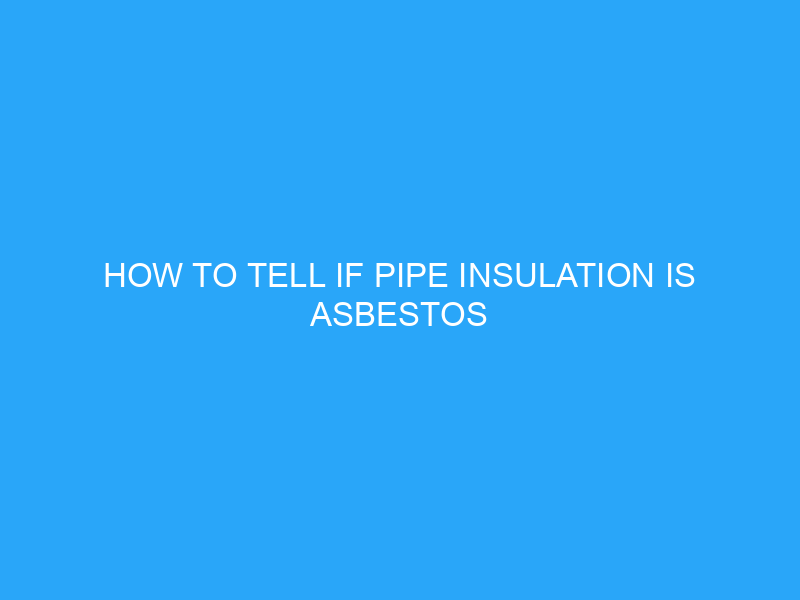If you suspect your home’s pipe insulation may contain asbestos, you need to know the facts. Asbestos is a naturally occurring mineral fiber that was commonly used in building materials until it was linked to serious respiratory illnesses. Knowing how to recognize asbestos in pipe insulation can help you determine whether or not you need to take precautions for yourself and your family.
What is Asbestos?
Asbestos is a mineral that was once widely used in building materials and insulation due to its flexibility, fire resistance, and affordability. It is composed of tiny fibers that become airborne and can be inhaled, leading to serious health problems. Asbestos is known to cause respiratory illnesses such as mesothelioma, asbestosis, and lung cancer.
How to Identify Asbestos in Pipe Insulation
If you suspect your home’s pipe insulation may contain asbestos, you will need to take a few steps to determine whether or not it is present. First, you will need to examine the insulation. If it is made of a material such as cloth, cardboard, paper, or felt, then it may contain asbestos. You will also need to check the insulation’s age. If it was installed before 1980, it is more likely to contain asbestos.
Another way to determine if the insulation contains asbestos is to perform a visual inspection. Look for small fibers or dust that may be present in the insulation. If you see any, it may be a sign that the insulation contains asbestos.
Do I Need to Hire a Professional?
If you are unsure whether or not your home’s pipe insulation contains asbestos, you may want to consider hiring a professional to conduct a thorough inspection. A professional will be able to accurately identify asbestos and advise you on the best course of action for safely removing the material.
What Should I Do if My Home’s Pipe Insulation Contains Asbestos?
If your home’s pipe insulation contains asbestos, it is important to take the necessary steps to remove it safely. It is best to hire a professional asbestos abatement specialist to handle the removal process. The specialist will be able to properly remove the asbestos and ensure that it is disposed of properly.
Frequently Asked Questions about How to Tell if Pipe Insulation is Asbestos
What is asbestos?
Asbestos is a mineral fiber that was used in building materials until it was linked to serious respiratory illnesses. It is composed of tiny fibers that become airborne and can be inhaled, leading to serious health problems.
How can I tell if my pipe insulation contains asbestos?
You can determine if your pipe insulation contains asbestos by examining the insulation for material such as cloth, cardboard, paper, or felt. You can also check the insulation’s age and perform a visual inspection for small fibers or dust.
Do I need to hire a professional to inspect my pipe insulation for asbestos?
If you are unsure whether or not your home’s pipe insulation contains asbestos, you may want to consider hiring a professional to conduct a thorough inspection. A professional will be able to accurately identify asbestos and advise you on the best course of action for safely removing the material.
What should be done if my home’s pipe insulation contains asbestos?
If your home’s pipe insulation contains asbestos, it is important to take the necessary steps to remove it safely. It is best to hire a professional asbestos abatement specialist to handle the removal process. The specialist will be able to properly remove the asbestos and ensure that it is disposed of properly.
Conclusion
Knowing how to tell if pipe insulation is asbestos is important for ensuring the safety of yourself and your family. If you suspect your home’s pipe insulation may contain asbestos, it is best to hire a professional to inspect it and advise you on the best course of action for safely removing the material. Taking the time to properly identify asbestos in pipe insulation can help you make an informed decision about the health and safety of your home.






